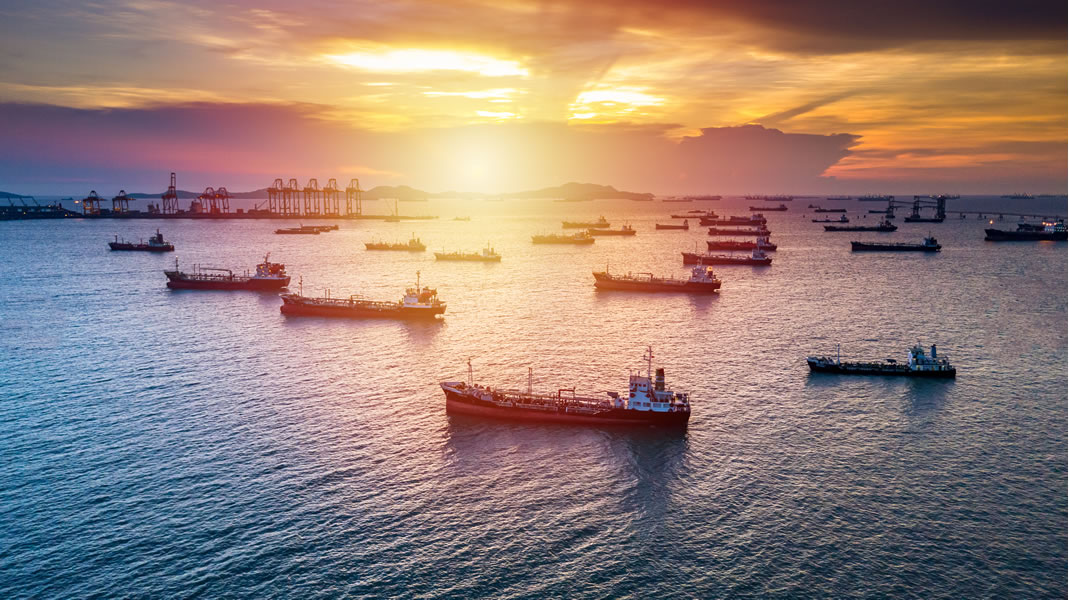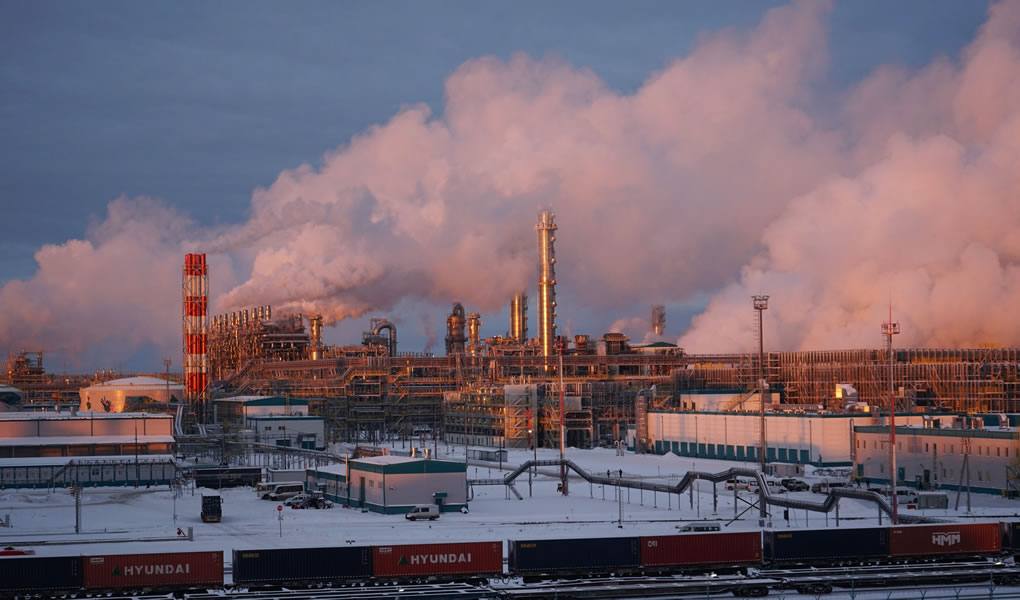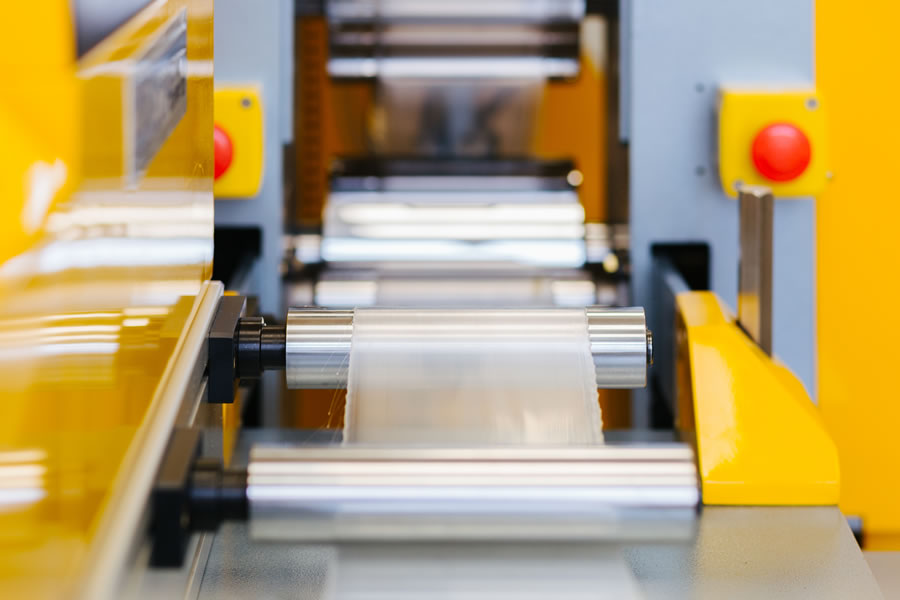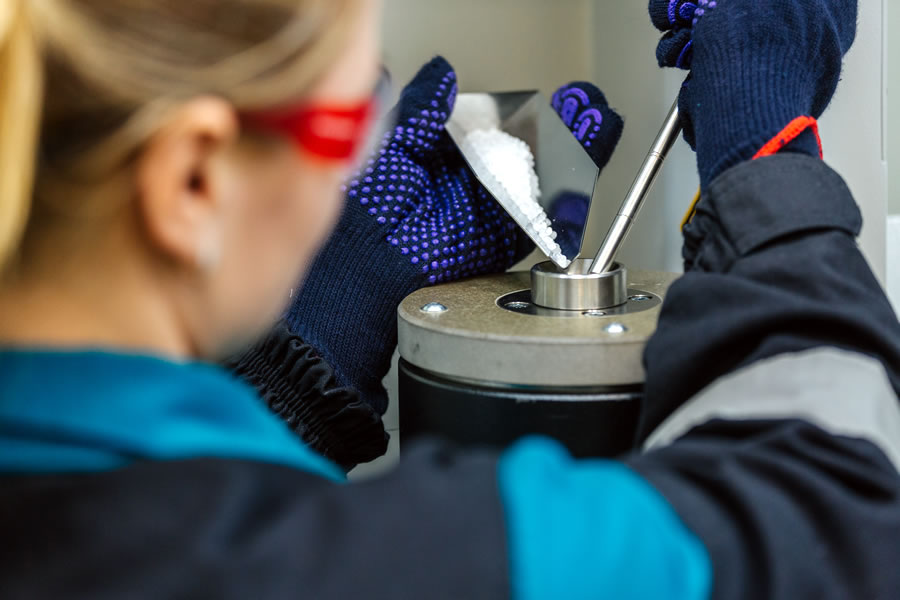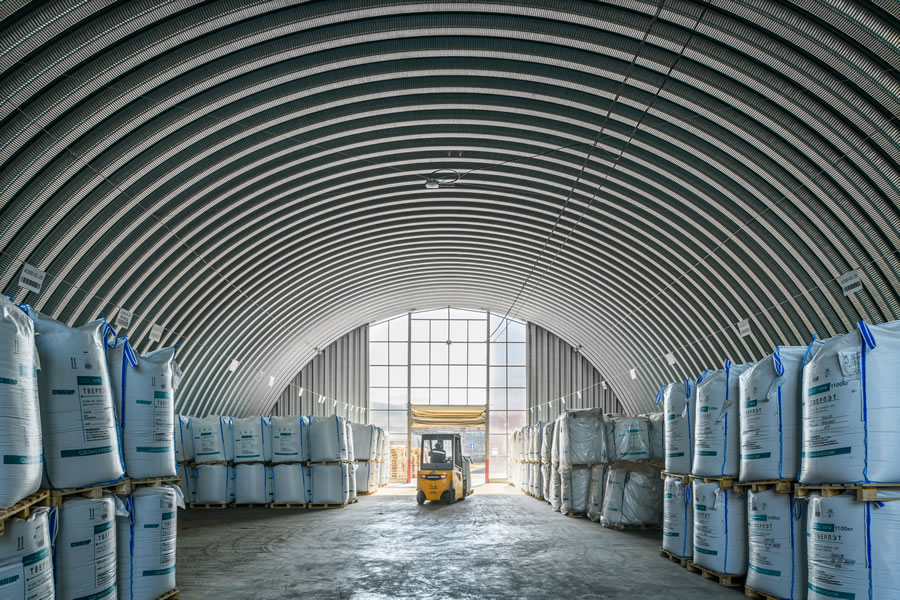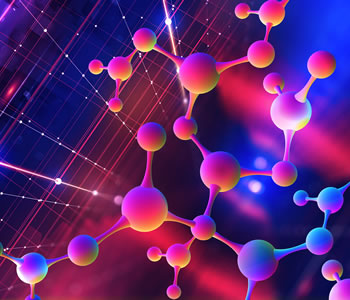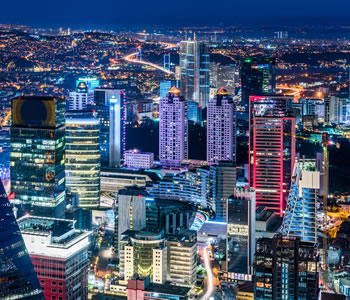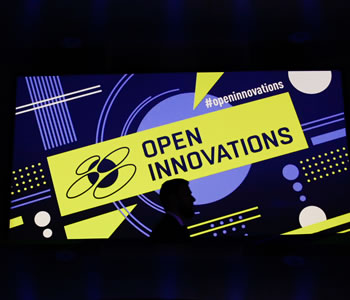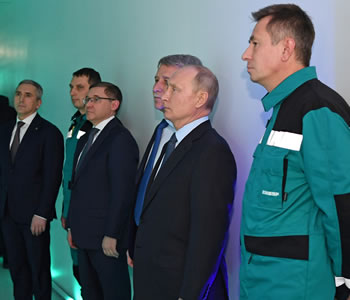2020 has become one of the most difficult years for the global economy, and the chemical industry is no exception. The pandemic-driven decline in demand from consumers for the products of major polymer plants across all industries has caused the production of bulk petrochemicals to collapse. The situation in Russia was not so dramatic, with many sectors of the chemical industry able to demonstrate growth. Going forward, experts predict that the surplus of core products will be the main risk to the petrochemical sector.
Negative dynamics
Along with other industries, the bulk polymer market, which used to grow by more than 4% annually, faced a full-on crisis in 2020. The coronavirus pandemic exacerbated existing problems stemming fr om the supply-demand imbalance in the global market. Negative dynamics in the sector appeared early in 2020. In January, the decline was 0.8% vs the previous month, and in February it increased to 2.1%. By March, the global chemical industry reduced its production volumes by as much as 4.2%. “The biggest dip (down 10.3% in March) was posted in China, where production facilities were operating at minimum loads or were idle throughout February and most of March,” points out the Market of Bulk Polymers review by the Higher School of Economics.
The drop in oil prices and the coronavirus have driven down polymer prices and production volumes globally. Photo: oil tankers off the coast of California turned into floating warehouses for oil.
In the US and Europe, the decline in the chemical markets in March, the first peak of the pandemic, was not so serious (just over 2% year-on-year). At the same time, overall global capacity utilisation decreased by 76.9% to an 11-year low. The coronavirus pandemic and related restrictions not only triggered a collapse in demand but also disrupted global supply chains, causing major market fluctuations.
Along with other industries, the bulk polymer market, which used to grow by more than 4% annually, faced a full-on crisis in 2020
The Russian market
In Russia, petrochemical companies faced similar problems, but the country avoided the scenario seen elsewhere in the world because the pandemic did not hit the country until mid-March. For this reason, the industry showed good dynamics in Q1 2020: the output of chemical products increased by 6.7% year-on-year, and by 9.6% in March vs February. Plastic production grew by a record 18% in the first four months of 2020, when the impact of coronavirus was still not as pronounced in Russia. The growth was mainly driven by the launch of SIBUR’s largest plant, ZapSibNeftekhim. New capacity additions supported polyolefin production growth, which between 2013 and 2015 exceeded 20% due to the simultaneous launch of Poliom (capacity: 180 thousand tonnes) and Tobolsk-Polymer (500 thousand tons, both owned by SIBUR), but remained flat at 7% for the next few years.
However, the Higher School of Economics notes that by May the demand, bolstered by manufacturers of plastic packaging, medical goods and nonwovens, started to decline as construction projects were halted, the situation in the automotive industry became critical, and purchasing power fell. In particular, according to Rosstat, in April, the manufacturing of plastic goods decreased by 10% vs March, automotive component production fell by 54%, refrigerators 72% and washing machines 75%. While initially the PVC and ABS plastics market suffered the most, the decline in demand started to affect other types of plastic in April, and was not offset by the packaging and medical goods market.
In 2020, ZapSibNeftekhim ramped up to design capacity.
The subsequent lifting of restrictions introduced as part of the efforts to combat the coronavirus, and the resumption of activities in petrochemical product-consuming sectors were of little help. According to Artem Lebedskoy-Tambiev, a consultant at VYGON Consulting, Russian demand for basic polymers – polyethylene and polypropylene – fell by almost 15% over nine months. “Despite this,” he added, “high competitiveness allowed Russian petrochemical producers to maintain a high level of capacity utilisation.” In addition, ZapSibNeftekhim was operating almost at full capacity (average production capacity utilisation reached 85% in Q3). Lebedskoy-Tambiev expects that the production of basic polymers in Russia will grow 1.5 times year-on-year while exports will more than quadruple.
High competitiveness allowed Russian petrochemical producers to maintain a high level of capacity utilisation
The global plastics market
Nina Adamova, Senior Analyst at Gazprombank’s Centre for Economic Forecasting, predicts that over 2020, global demand for the main types of bulk plastics will have contracted by 2% to 341 million tonnes. The polyethylene segment will be the only one to buck the negative trend. “Although,” she notes, “many chemical sectors have seen a rapid recovery in demand since June 2020.” Nevertheless, prices are still relatively low, as a result of overproduction and lower consumer purchasing power, which affects the consumption of finished goods.
At the same time, Nina Adamova believes that the capacity of the Russian market for bulk plastics, which reached 6 million tonnes in 2019, will grow despite the coronavirus pandemic. “Due to changes in the polyolefins segment in 2020, the Russian bulk plastics industry will post positive net export values for the first time,” she concluded.
Polyethylene
According to VYGON Consulting, the production of low-density polyethylene (LDPE) in 2020 will more than double, reaching 1.8 million tonnes. In eight months, Russian companies produced 1.2 million tonnes of this polymer, with most of it (730 thousand tonnes) sold to export markets. Sales to foreign markets are expected to grow 7.6 times by year-end.
Production of high-density polyethylene (HDPE) in the first eight months of 2020 amounted to 451 thousand tonnes. The output of this product is expected to grow by 3.2% to 677.2 thousand tonnes for the full year, while exports will increase more significantly – by 20.3% to 203.5 thousand tonnes, according to VYGON Consulting’s forecast.
Gazprombank believes that polyethylene production in Russia will have grown 1.5 times over 2020, while net polyethylene exports will show positive values. Their experts are confident that the potential for an increase in domestic and foreign demand for Russian-produced polyolefins remains high.
Polyethylene production at SIBUR’s Tobolsk production site.
According to their forecasts, the decline in global demand for polyethylene fr om mechanical engineering, construction and the production of household appliances and other durable goods will be offset by increased demand for packaging and consumer goods. At the same time, the pandemic has accelerated the substitution of low-density polyethylene with a linear product. According to the bank’s experts, the global volume of the segment will slightly exceed its 2019 level and will amount to about 108.5 million tonnes. Going forward, expected capacity growth over 2021–2024 by a quarter vs the 2019 level will cause increased sell-side pressure from the surplus in the global market. Gazprombank’s experts expect that the industry will not return to pre-crisis levels of capacity utilisation before 2027–2028.
In 2020, the Russian bulk plastics industry will post positive net export values for the first time
Polyethylene processors are also upbeat about the market’s prospects: Petr Titov, Director of the Information Policy and Development Department of POLYPLASTIC Group, stressed, “The company has successfully made it through 2020. The first half of the year was marked by large supplies of products to pandemic-related construction sites building various medical facilities and hospitals. In Q2, restrictions wrought havoc on construction companies, but once they were lifted, market players returned to normal operations and had to immediately scramble to make up for lost time. Pent-up Q2 demand was realised in Q3 and Q4 2020. As a result, the group’s production capacities are now fully loaded: construction companies are on a spending spree, as delays in the implementation of federal programmes and national projects are not tolerated.”
Throughout 2020, the flexible packaging sector was affected by several concurrent factors. According to Neo-Pak (a producer of a wide range of packaging materials), on the one hand, the importance of packaging as a factor in product safety has increased and demand has grown as well; on the other hand, market turbulence, growing FX rates and prices for raw materials have caused problems for small players. “We judge the company’s results as fairly good and are looking to the future with restrained optimism,” said Alexander Ladan, head of Neo-Pak. He explained that during the first wave of lockdown, the company’s shopping bag business sank following restrictions on all brick-and-mortar retailers. At the same time, orders for courier bags surged, while demand for packaging for food, construction mixes, soils and animal feed increased. Now the situation is more balanced, although the second wave is not over yet.
Polypropylene
While the global demand for this polymer reached 75 million tonnes in 2019, Gazprombank’s experts expect output to drop by 1%–2% amid demand contraction. Specifically, the largest tangible decline in PP consumption (27%) is seen in the automotive components segment. Polypropylene consumption in the production of fibre and consumer goods will decrease by 5%–6%. “The decline is offset by growing demand for polyethylene to produce film and packaging for the food industry and from manufacturers of medical goods,” says Nina Adamova.
Polypropylene quality analysis in a laboratory at SIBUR’s Tomsk production site.
Between January and August, polypropylene production in Russia amounted to 1.2 million tonnes. VYGON Consulting expects full-year production to be 1.8 million tonnes (up 30% year-on-year). Export volume will have increased 3.2 times to 994 thousand tonnes.
At the same time, Ms Adamova points out that the largest ever polypropylene capacity additions were scheduled for 2020–2022 (up 21% vs 2019), but due to the crisis the launches may be partially postponed. “Nevertheless,” she added, “in the medium term, the global polypropylene market surplus will increase significantly.”
In the medium term, the global polypropylene market surplus will increase significantly
Polyvinyl chloride
Experts believe that the global polyvinyl chloride (PVC) market will suffer a more significant decline (down 4% from 48 million tonnes in 2019). China and South Korea will be the only countries wh ere average annual consumption will not fall. “However,” explains Ms Adamova, “the industry is currently demonstrating a rapid recovery in demand, which has a positive impact on prices.” In 2021–2022, she expects an increase in PVC consumption in the global construction industry and agriculture (irrigation hoses).
The production of PVC in Russia exceeded 1 million tonnes in 2019, and in 2020, production and consumption are set to decline on average by 5%–7% due to the downturn in the construction industry, Gazprombank predicts.
VYGON Consulting’s assumptions also indicate a 3.3% reduction in the production of suspension PVC in 2020. In the first eight months, production amounted to 615.2 thousand tonnes. Full-year exports may reach 214.3 thousand tonnes, up 6.4% year-on-year.
Polystyrene
The global demand for polystyrene (PS) will decrease by about the same amount (3%–4%, to 26–27 million tonnes), reflecting the downturn in the global construction and automotive industries and lower consumer purchasing power. The latter decline, however, will be offset by increased consumption of packaging for e-commerce and take-away beverage sales. However, in the long term, bans on PS packaging and single-use items will become more widespread around the world. The Chinese programme may threaten up to 0.5 million tonnes of PS (up to 15% of the Chinese market). Nina Adamova believes that cheaper polyolefins will contribute to PS substitution in the segments wh ere it is viable.
At the same time, full-year production for this type of polymer in Russia (2019 production: 550 thousand tonnes) is not expected to decline despite the crisis. During the pandemic, demand was still driven by packaging (disposable EPS containers, disposable cups). Production of general purpose and impact resistant PS in January–August amounted to 265 thousand tonnes with scope to grow by 4.3% to 397.4 thousand tonnes by year-end, of which 90.2 thousand tonnes may be exported (up 5.6%).
Nina Adamova notes that the Russian polystyrene market continues to run a slight deficit: in 2021–2023, production growth will be constrained by existing capacity. She explained that in this context, Russian producers’ prices will be affected by two factors: on the one hand export price (volatility, relatively low prices due to prohibitions and substitution) and deficit in the local market on the other hand.
Polyethylene terephthalate
A 15%–20% increase in the demand for polymer packaging in March and April stirred up the market for polyethylene terephthalate (PET), and already in May, Russian feedstock producers raised their prices. After that, many processors switched to more affordable materials from China, which ramped up production after the lockdown, while the Russian PET resin market was oversupplied. Market participants estimate that due to the lockdown and a rainy May, sales of soft drinks in PET bottles decreased by more than 25% year-on-year, driving a reduction in the demand for feedstocks. In this context, Russian manufacturers reduced prices in May to win their customers back. In summer, PET consumption recovered on the back of the growing demand for soft drinks.
A warehouse for granular PET at the Company’s Tver production site.
BusinesStat expects 2020 sales of polyethylene terephthalate in Russia to decrease following a decline in real incomes, which will lead to lower demand for PET goods. The crisis has the same negative effect on construction and maintenance operations and, consequently, on the sales of construction materials produced from polyethylene terephthalate. Over 2021–2024, PET sales are expected to recover at an annual rate of 0.6%–1.4%.
The market will seek balance
Nina Adamova believes that in the medium term, the bulk plastics market will face a surplus of polyolefins and olefin feedstocks for polyolefin and PVC production, more widespread bans on plastics, increased competition, and mutual substitution in the plastics market. According to her, China’s efforts at import substitution, along with the development of crude oil-to-chemicals projects will contribute to the surplus. At the same time, Gazprombank expects that the weak Q1 2020 will not allow the Chinese market of bulk plastics to grow by more than 1.5%. The bank’s experts believe that in 2020, the capacity of the Chinese polyolefin market will increase by 4%–6% for polyethylene and by 1%–2% for polypropylene due to steady demand from manufacturers of packaging, personal protective equipment and medical goods, as well as the relatively fast recovery of the Chinese economy after the crisis.
In the medium term, the bulk plastics market will face a surplus of polyolefins and olefin feedstocks, more widespread bans on plastics, increased competition, and mutual substitution in the plastics market
Additional pressure on the global polymer market will come from the sector’s feedstock producers seeing much more potential in the petrochemical sector than in the refining industry, which faces low demand for petroleum products on the back of reduced mobility and the spread of electric vehicles.
Artem Lebedskoy-Tambiev also sees new production capacity additions outpacing demand as the key risk to the industry in the medium term. In particular, ethylene capacity additions in 2020–2022 may total up to 30 million tonnes, while consumption will only grow half as quickly. That is why state support for the industry, ensuring the competitiveness of Russian products in external markets, will be crucial, he notes.
The Higher School of Economics also considers the market surplus to be a pivotal problem in the future, because despite the shift in the deadlines for the commissioning of individual facilities, the overall growth of polymer production will continue. The drop in oil prices has seriously shifted the balance of power in the market: the competitiveness of European producers using naphtha as feedstock has increased, while that of producers using shale oil or gas in the USA and coal in China has decreased, which has an unavoidable knock-on effect on investment projects.
Expectations of processors and suppliers
Market participants offer varied views of the situation in different polymer markets. For example, despite the difficulties, Neo-Pak is not planning to review its investment programme. Next year, the producer expects a 25%–35% year-on-year growth. “If we talk about the industry in general, we can expect that major players will follow the path to consolidation, since the production of packaging on an industrial scale is quite capital-intensive,” says Mr Ladan. E-commerce will continue growing, driving the demand for courier bags.
International Plastic Guide (a supplier of compounds, plasticisers and other components for polymer modification) is less optimistic. However, the manufacturer’s 2020 results turned out better than those projected in April and May. “The packaging manufacturer segment is stable, sales to consumers in the medical goods market and to spunbond manufacturers increased, and the construction and cable markets survived thanks to government orders and the construction of new medical facilities. Nevertheless, in general, most customers have a feeling that soon everything will cease: orders, payments, etc.,” observes Tatiana Serova, the company’s CEO.
According to International Plastic Guide, the most pronounced decline is expected in the construction and cable segments, which will shift to cheaper solutions for all products. Measures adopted by the government to combat COVID-19 will continue to make the strongest impact on business next year. At the same time, International Plastic Guide does not intend to review its strategy, instead, planning to take advantage of reduced loan rates and purchase new equipment.
POLYPLASTIC expects that the polymer material market, in which the company operates, will be able to grow, provided that the state continues to actively finance and enforce federal projects and programmes, especially in utility infrastructure construction. In addition, the company believes that there is pent-up demand in the market, as many enterprises have suspended investment programmes due to the pandemic, which may be realised next year. All of the above factors, coupled with the high level of wear and tear of utility networks (currently about 60% across Russia) and the need to replace them will drive increased demand for polymer pipes and materials.
Download PDF

